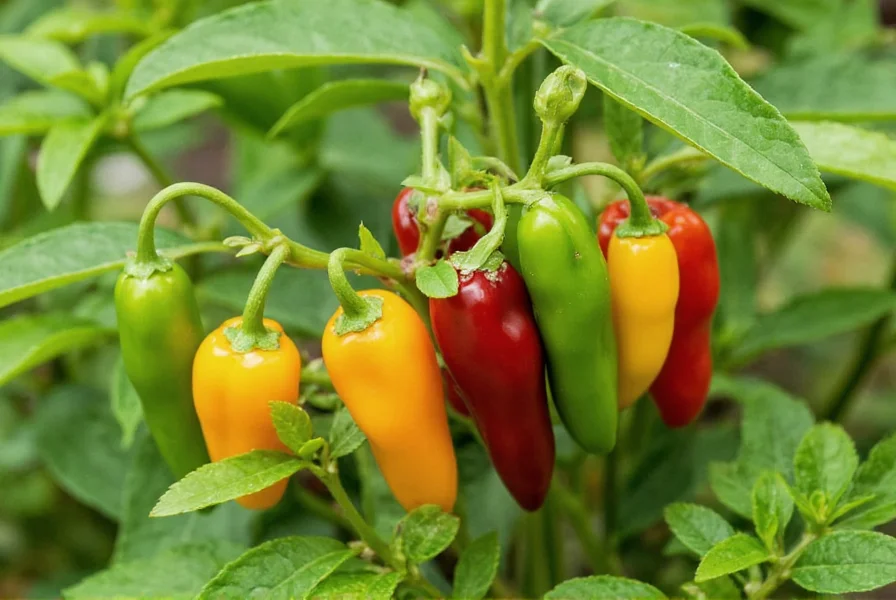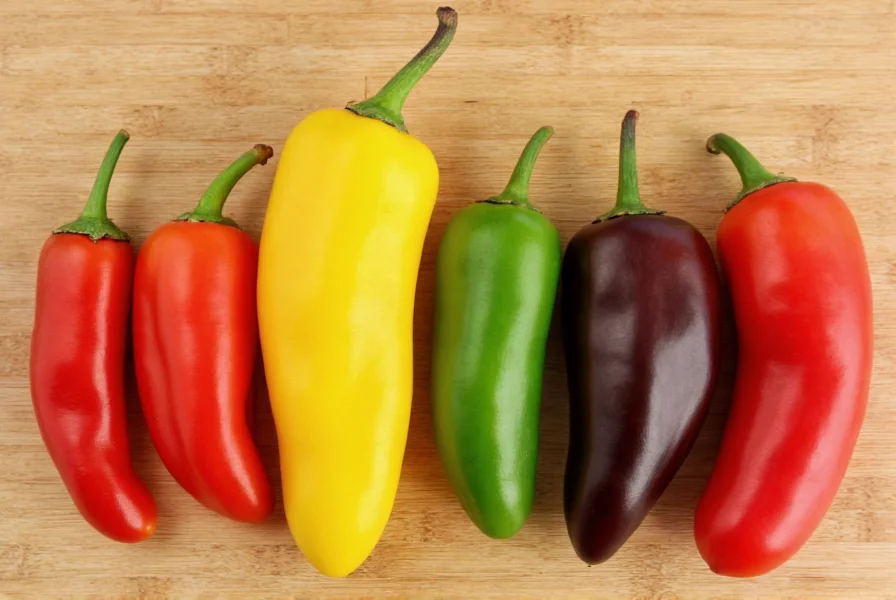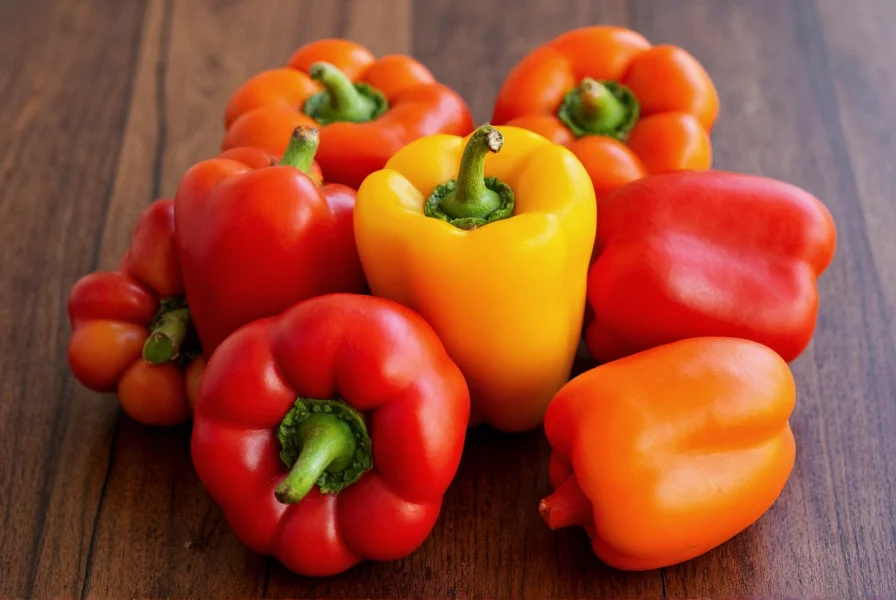Native to China and cultivated for centuries, this remarkable pepper plant produces small, tapered fruits that showcase nature's color spectrum throughout their maturation cycle. Unlike common misconceptions, it's not related to Chinese five-spice powder but represents a specific heirloom pepper variety prized by gardeners and chefs alike for its visual appeal and flavor profile.
Botanical Characteristics and Growth Cycle
The Chinese 5 Color Pepper belongs to the Solanaceae family and demonstrates exceptional ornamental value alongside its culinary applications. Each plant typically reaches 18-24 inches in height, producing abundant clusters of 2-3 inch peppers that transform through five distinctive color phases over a 60-90 day maturation period.
Understanding the chinese 5 color pepper growth stages reveals why this variety fascinates horticulturists: starting as deep purple buds, they progress to vibrant yellow, then orange, followed by bright red, and finally mature to a rich burgundy. This color-changing phenomenon occurs due to shifting pigment concentrations as chlorophyll breaks down and carotenoids develop.

Cultivation Requirements for Optimal Growth
Gardeners seeking to grow chinese five color peppers successfully should note these essential cultivation factors:
| Factor | Requirement | Notes |
|---|---|---|
| Sunlight | Full sun (6-8 hours) | Essential for vibrant color development |
| Soil pH | 6.0-6.8 | Well-draining soil prevents root rot |
| Watering | Consistent moisture | Avoid waterlogging; mulch helps retain moisture |
| Temperature | 70-85°F (21-29°C) | Frost-sensitive; requires warm conditions |
| Harvest Time | 60-90 days after transplanting | Peppers can be harvested at any color stage |
For those growing chinese 5 color peppers in containers, select pots at least 12 inches in diameter with adequate drainage. Container-grown plants may require more frequent watering but offer the advantage of mobility to optimize sun exposure throughout the growing season.
Culinary Applications and Flavor Profile
Despite its ornamental appeal, the Chinese 5 Color Pepper delivers substantial culinary value. The flavor profile evolves with each color stage—starting with earthy, slightly bitter notes when purple, developing sweeter characteristics at the yellow and orange stages, and reaching complex fruity-spicy notes when fully red or burgundy.
Chefs specializing in authentic Chinese pepper recipes often utilize these peppers in stir-fries, pickling preparations, and as colorful garnishes. The heat level remains moderate (5,000-10,000 Scoville units), making it accessible to those who prefer milder heat while still providing distinctive flavor.
When exploring how to use chinese five color peppers, consider these applications:
- Add sliced peppers to stir-fries during the final cooking minutes to preserve color
- Stuff with rice and protein fillings for visually striking appetizers
- Pickle in vinegar solutions to create vibrant condiments
- Dry and grind into colorful seasoning blends
- Roast and incorporate into sauces for depth of flavor and color

Nutritional Benefits and Preservation Methods
Beyond their visual appeal, Chinese 5 Color Peppers offer significant nutritional advantages. Like other capsicum varieties, they're rich in vitamin C (exceeding oranges by weight), vitamin A precursors, and antioxidant compounds that increase as the peppers change color.
For gardeners with abundant harvests, understanding preserving chinese five color peppers extends their usability:
- Drying: String peppers and hang in a warm, dry location; preserves for up to a year
- Freezing: Blanch briefly then freeze whole for cooking applications
- Pickling: Creates vibrant condiments that maintain color for 6-12 months
- Oil preservation: Submerge in olive oil with herbs for flavored infusions
Common Misconceptions Clarified
Several misunderstandings surround this unique pepper variety. First, it's not related to Chinese five-spice powder—a completely separate seasoning blend. Second, while visually striking, it's not merely ornamental but fully edible throughout all color stages. Third, the heat level remains consistent regardless of color, though flavor complexity increases with ripeness.
When researching chinese 5 color pepper vs regular peppers, note that this variety offers greater visual diversity and slightly different flavor notes compared to standard bell peppers or jalapeños, making it a valuable addition to diverse culinary applications.
Where to Source Seeds and Plants
Gardeners interested in cultivating Chinese 5 Color Peppers can find seeds through specialty seed catalogs, online gardening retailers, and occasionally at local nurseries during spring planting season. When selecting seeds, look for reputable suppliers who specify the botanical name Capsicum annuum 'Chinese Five Color' to ensure authenticity.
For those exploring growing chinese five color peppers from seed, start indoors 8-10 weeks before the last frost date, maintaining soil temperatures around 80°F for optimal germination. Transplant outdoors after danger of frost has passed and nighttime temperatures consistently exceed 55°F.
Frequently Asked Questions
Is the Chinese 5 Color Pepper extremely hot?
No, Chinese 5 Color Peppers range from mild to medium heat (5,000-10,000 Scoville units), significantly milder than habaneros but with more heat than bell peppers. The heat level remains consistent regardless of color stage.
Can I eat Chinese 5 Color Peppers at any color stage?
Yes, Chinese 5 Color Peppers are edible at all color stages. The flavor profile changes as they ripen—starting earthy and slightly bitter when purple, becoming progressively sweeter and more complex as they transition through yellow, orange, red, and finally burgundy.
How long does it take for Chinese 5 Color Peppers to change colors?
The color transition occurs over 60-90 days after transplanting. Individual peppers typically spend 1-2 weeks in each color stage, with the complete cycle from purple bud to deep burgundy taking approximately 2-3 months under optimal growing conditions.
Are Chinese 5 Color Peppers the same as Chinese five-spice powder?
No, they are completely different. Chinese 5 Color Peppers refer to a specific pepper variety that changes color as it ripens, while Chinese five-spice powder is a seasoning blend typically containing star anise, cloves, Chinese cinnamon, Sichuan pepper, and fennel seeds.
What's the best way to preserve the vibrant colors of Chinese 5 Color Peppers?
To maintain vibrant colors, avoid overcooking. Add sliced peppers during the final minutes of cooking, or preserve through pickling, drying, or oil infusion. Freezing preserves color well for cooked applications but may slightly alter texture.











 浙公网安备
33010002000092号
浙公网安备
33010002000092号 浙B2-20120091-4
浙B2-20120091-4